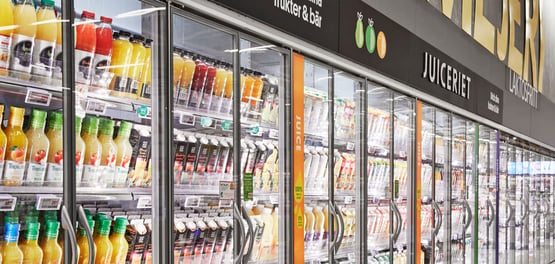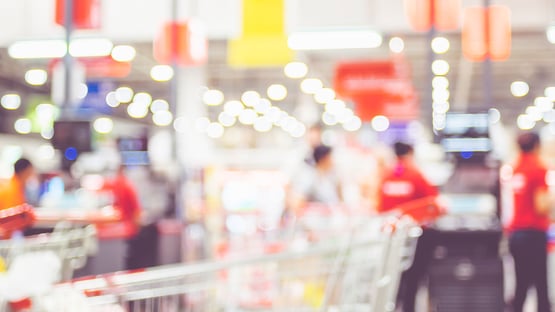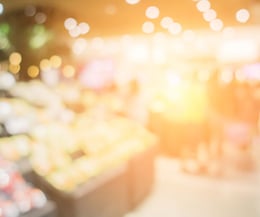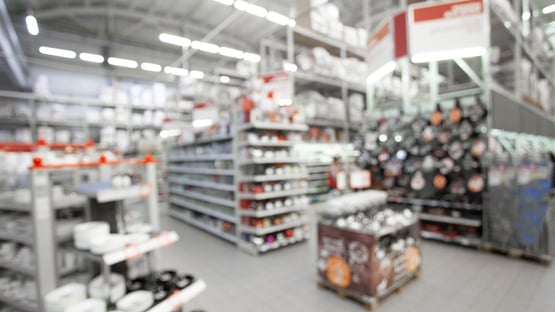The customer as the new disruptor: How the digital store is rising to meet the needs of the modern shopper.
When once we would have talked about digital as being the retail disruptor now, as customers increasingly take control of their in-store journeys, they are now the force for change retailers need to adapt to. Duncan Potter, Chief Marketing Officer at Pricer, explores how the shelf edge can work harder to better meet new shopper needs.
The two founding principles of the grocery supermarket were customer self-service and low prices. The very first Piggly Wiggly store opened back in 1916 in Memphis, Tennessee in the US credited with launching self-service, and in 1930 the first King Kullen store opened with the slogan ‘Pile it high. Sell it Low.’ Here was a new way of communicating with customers that broke the old one-to-one tradition of local, personalised retail that shopkeepers once delivered.
These principles still define the supermarket over 100 years later and its shop window is the shelf, through which retailers communicate a myriad of messages about range, quality, price and aspiration. The appliance of deep science over many years to develop this shelf edge for maximum efficiency as well as customer appeal has become almost an art form as retailers have turned to many other disciplines in their quest for profit.
The customer, who back in 1930 had initially to be guided by supermarket staff around the new aisles, and many of whom kept a running total of their spending as they walked (shopper trust was often lower than the prices), today is able to play the shelf edge game almost as well as the retailer.
In fact, self-service has now developed in the full knowledge that the customer is increasingly in control, and the model has extended from grocery into other retail verticals, such as DIY and pharmacy. Customers know where more or less everything is and if they don’t, they are certainly happy to manage their own voyage of discovery. They demonstrate enormous price sensitivity over a large range of goods, backed up by almost complete transparency through the Internet; they can meal plan in their heads (or be guided by the recipe on their smartphones); and they can pick, scan, pack and check out without any help or intervention from staff.
Greater pressure on the shelf to perform even more effectively
The customer’s willingness to play a greater part in their supermarket life brings enormous benefits to the retailer; but in their quest for automation in order to keep labour costs down, this has put greater pressure on the shelf to perform even more effectively. And in recent times, technologies that have been around for 20 or more years are being integrated to define the next generation shelf edge.
What were once regarded as point solutions, such as electronic labels, are now being integrated into a solution that thinks about two key objectives of modern mass market retail – operational efficiency, and customer service and convenience. But these are not separate objectives; to serve the customer is know the customer, and operational efficiency flows from that in terms of a host of activities, namely allocation, assortment, ranging, picking, replenishment and the pricing to markdown lifecycle.
The solution, driven by KPIs around all these activities embraces a range of technologies, including electronic shelf edge labelling, geolocation and people tracking and machine vision, which together communicate, advise and monitor. By enabling the store to monitor customer behaviour in every part of the store, retailers are able to continuously improve store journeys, shelf layouts and displays, replenishment and promotions.
And from an operational perspective, by continuously, we are talking about in-shift rather than end of day. The latest generation of shelf talkers provide continuous alerts on shelf gaps that need immediate replenishment, products that should be moved to comply with planograms.
The technology can now go further. It reads the shelf intelligently using video capture, but then converts the numerical data as well, matching to file to analyse sales relationships between products that then informs replenishment and promotional decisions. These analyses can then compare space and price elasticity of products, so space is allocated more efficiently based on sales and availability.
Enables retailers to address the problem of waste
It also enables retailers to address the problem of waste, which is hurting their bottom line but also starting to affect their image with their customers, who are now demanding that their suppliers demonstrate highly responsible sustainability strategies and processes. Globally, it is estimated (IGD Wrap) that around a third of food is wasted and grocers bear the brunt of the negative publicity around this.
UN Sustainable Development Goal (SDG) 12.3 aims to halve per capita global food waste at the retail and consumer levels and reduce food waste along production and supply chains by 2030. Technology plays an important part; where technology is integrated across the product lifecycle, it becomes possible to think about waste at the very start of the supply chain, and then all the way through to final markdown, recycling or disposal.
For instance, by balancing prices across the lifecycle (initial, promotional, markdown) with ranging and replenishment, retailers are seeing waste in high margin but vulnerable categories, namely fresh and ambient, cut by between 20 and 40%. Add to this an even more responsive shelf edge strategy enabled by dynamic pricing, and waste is certain to fall even further.
For the customer, these technologies are able to support their journey in a number of ways. As customers demand more transparency on products in terms of not just price but ingredients, allergens, sourcing, use advice and so on, electronic labels are able to surface the key information most likely to stimulate purchase. Moreover, the latest generation of labels can now use multiple colours that complement the brand image and story that leads to purchase.
And the very latest development is labels that react to customers by lighting up; the options in trial at the moment include labels that react to a customer that is prepared to identify their preferences through their smart phone as well as anonymous triggering that is fully GDPR compliant.
Faster order picking for staff with flash technology
In the era of pick from store for home delivery or click and collect, which has seen a massive boost since Covid, the customer may well be a member of staff tasked with order picking, a job that must be completed as quickly as possible given that profitability in online groceries is still a challenge.
Labels that contain flash technology are triggered against orders enabling pickers to locate products in seconds, which delivers a hard commercial benefit in terms of labour hours. This same technology is now also used in reverse, flashing to indicate which product needs to be replenished to which space.
Retailers will be well aware that there is no shortage of companies that make products to provide a point solution. Electronic shelf-edge labels have been around for the over 20 years for instance, and their adoption ironically has probably been delayed by the fact that these makers sold principally on price and educated the market on price rather than value. Now, as part of a broader solution that has as its goal the digitisation of the whole store, they are a base technology with a growing set of use cases, with more of them backed by hard data from international roll outs.
This article has been published in Modern Retail on April 21, 2021 https://modernretail.co.uk/the-rise-of-the-digital-store/



